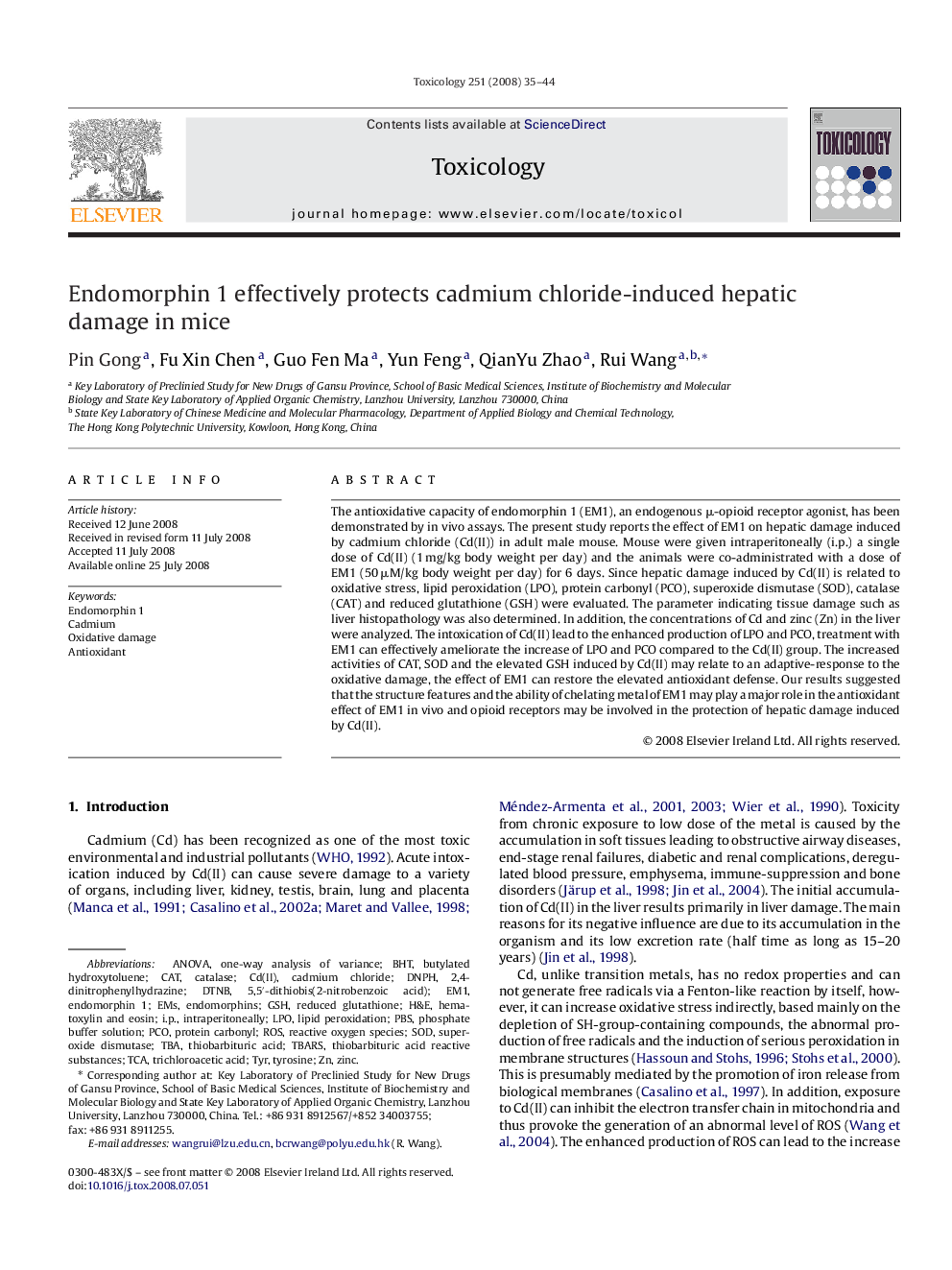| Article ID | Journal | Published Year | Pages | File Type |
|---|---|---|---|---|
| 2597085 | Toxicology | 2008 | 10 Pages |
The antioxidative capacity of endomorphin 1 (EM1), an endogenous μ-opioid receptor agonist, has been demonstrated by in vivo assays. The present study reports the effect of EM1 on hepatic damage induced by cadmium chloride (Cd(II)) in adult male mouse. Mouse were given intraperitoneally (i.p.) a single dose of Cd(II) (1 mg/kg body weight per day) and the animals were co-administrated with a dose of EM1 (50 μM/kg body weight per day) for 6 days. Since hepatic damage induced by Cd(II) is related to oxidative stress, lipid peroxidation (LPO), protein carbonyl (PCO), superoxide dismutase (SOD), catalase (CAT) and reduced glutathione (GSH) were evaluated. The parameter indicating tissue damage such as liver histopathology was also determined. In addition, the concentrations of Cd and zinc (Zn) in the liver were analyzed. The intoxication of Cd(II) lead to the enhanced production of LPO and PCO, treatment with EM1 can effectively ameliorate the increase of LPO and PCO compared to the Cd(II) group. The increased activities of CAT, SOD and the elevated GSH induced by Cd(II) may relate to an adaptive-response to the oxidative damage, the effect of EM1 can restore the elevated antioxidant defense. Our results suggested that the structure features and the ability of chelating metal of EM1 may play a major role in the antioxidant effect of EM1 in vivo and opioid receptors may be involved in the protection of hepatic damage induced by Cd(II).
